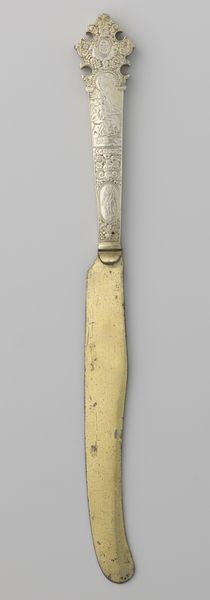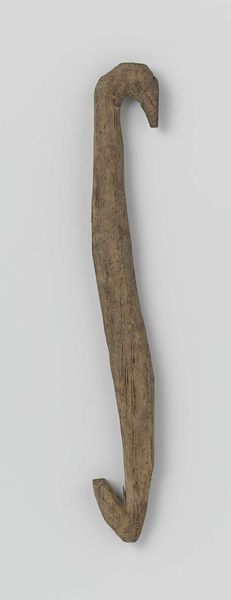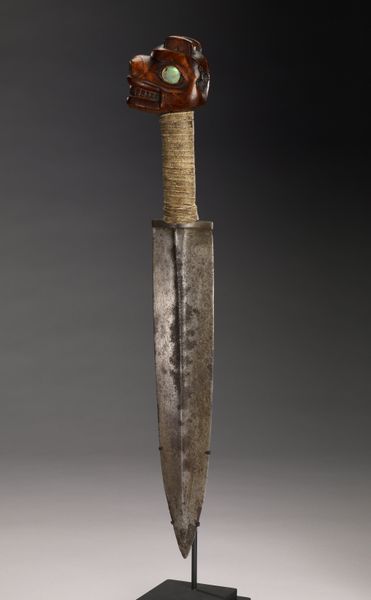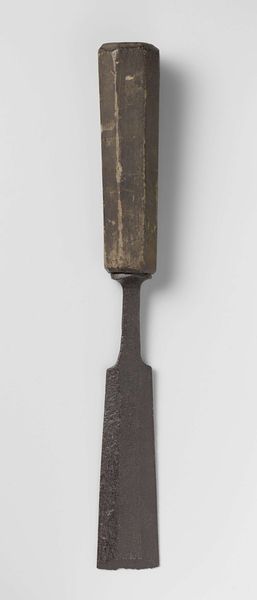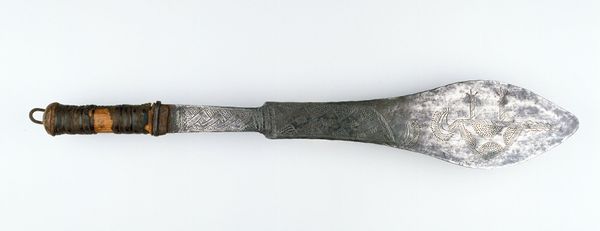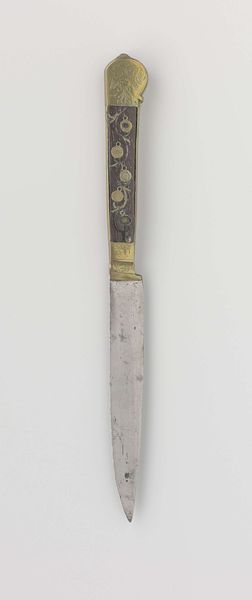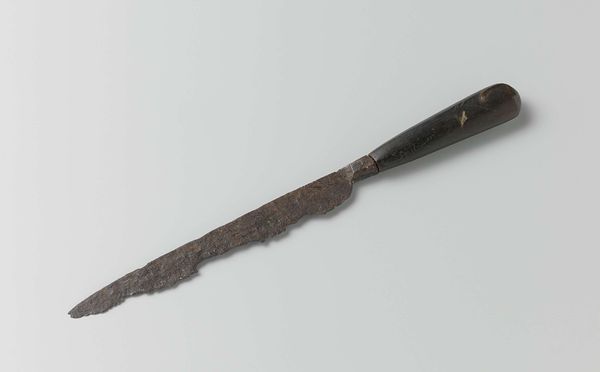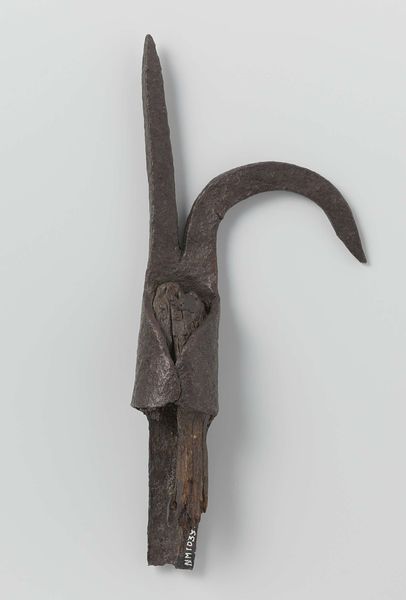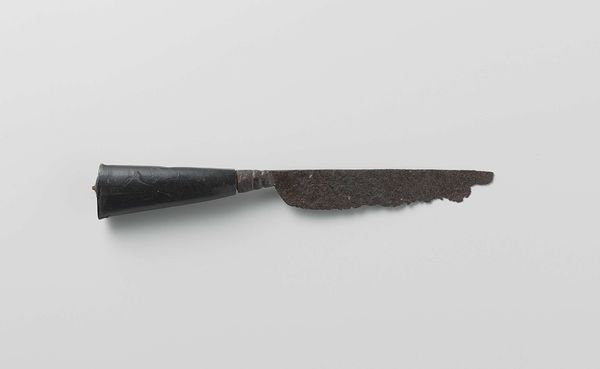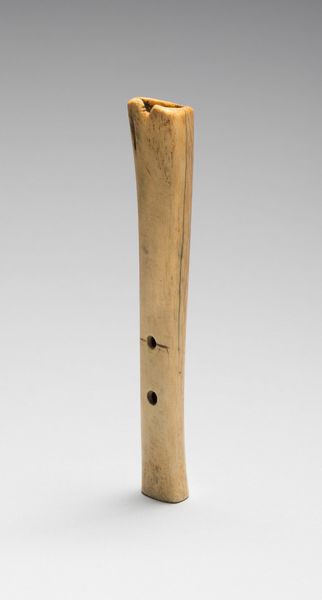
Glaive of Maximilian III Joseph, Prince-Elector of Bavaria (reigned 1745–77) 1771
0:00
0:00
carving, metal
#
weapon
#
medieval
#
carving
#
germany
#
metal
#
armor
Dimensions: L. 8 ft. 5 3/4 in. (258.4 cm); L. of head 27 1/2 in. (69.9 cm); W. 3 3/4 in. (9.5 cm); Wt. 7 lb. 0.9 oz. (3200.7 g)
Copyright: Public Domain
This is the Glaive of Maximilian III Joseph, Prince-Elector of Bavaria, likely crafted around the time of his reign from 1745 to 1777 by the artist Jungwierth. This isn’t just a weapon; it's a statement of power, deeply embedded in the social hierarchies of 18th-century Bavaria. Consider the role of Maximilian, an elite man whose identity was intrinsically linked to his position. This glaive, far from a battlefield tool, would have been used for ceremonial purposes; reinforcing his authority and status in a society sharply divided by class. The artistry involved speaks to the prince elector's wealth and the importance of appearances in maintaining social order. How does an object like this reinforce existing power structures? How does it feel to know that such exquisite craftsmanship was, in part, about maintaining a social hierarchy that privileged so few? This glaive embodies how personal identity and political power were intertwined, visualized through the objects we create and display.
Comments
No comments
Be the first to comment and join the conversation on the ultimate creative platform.
